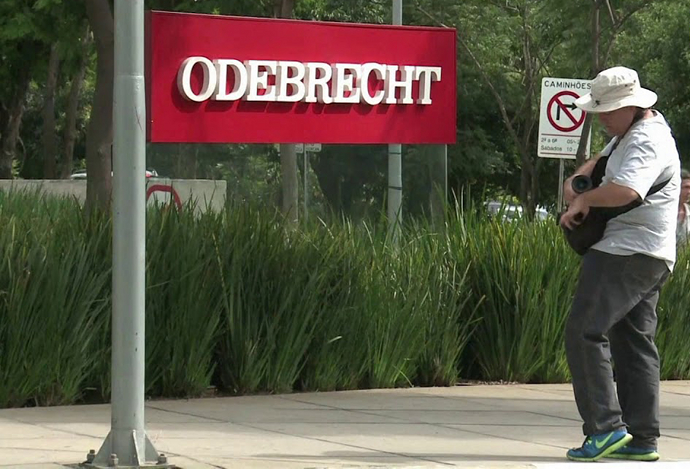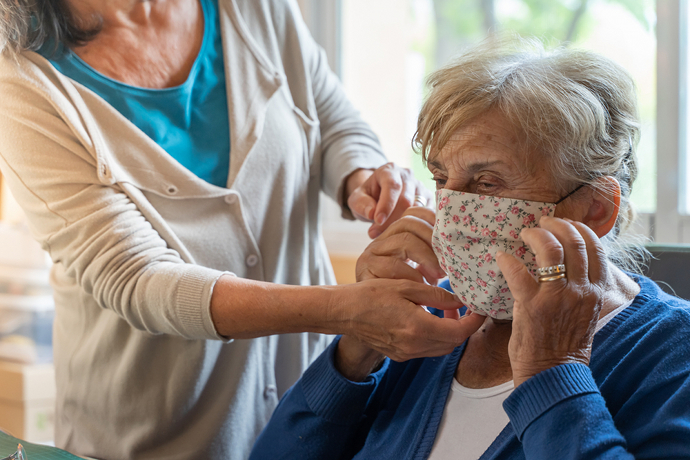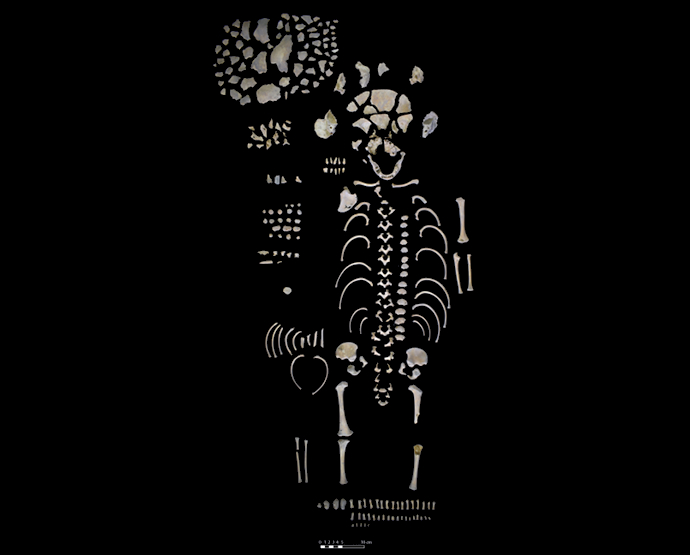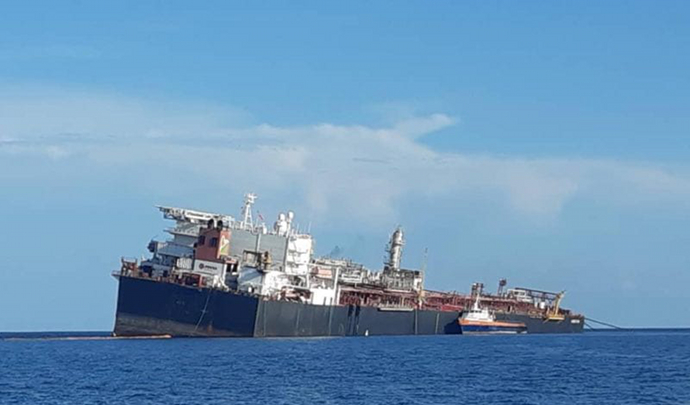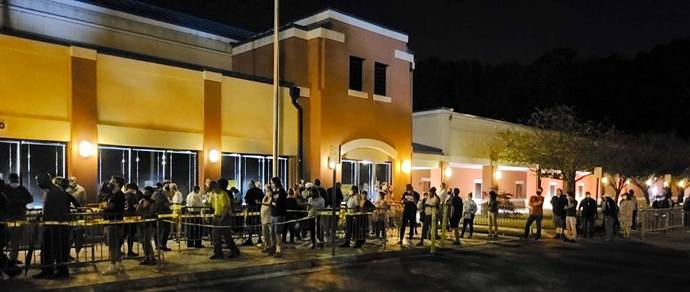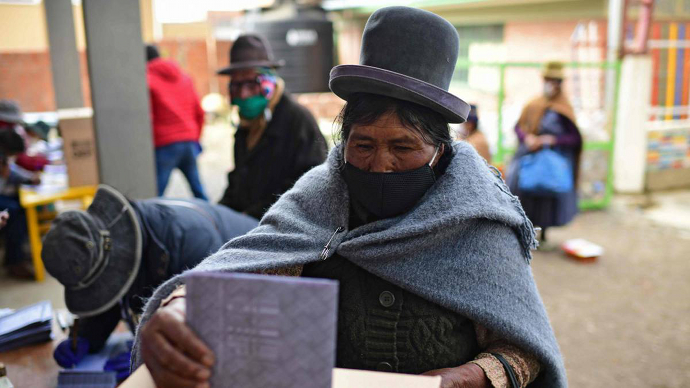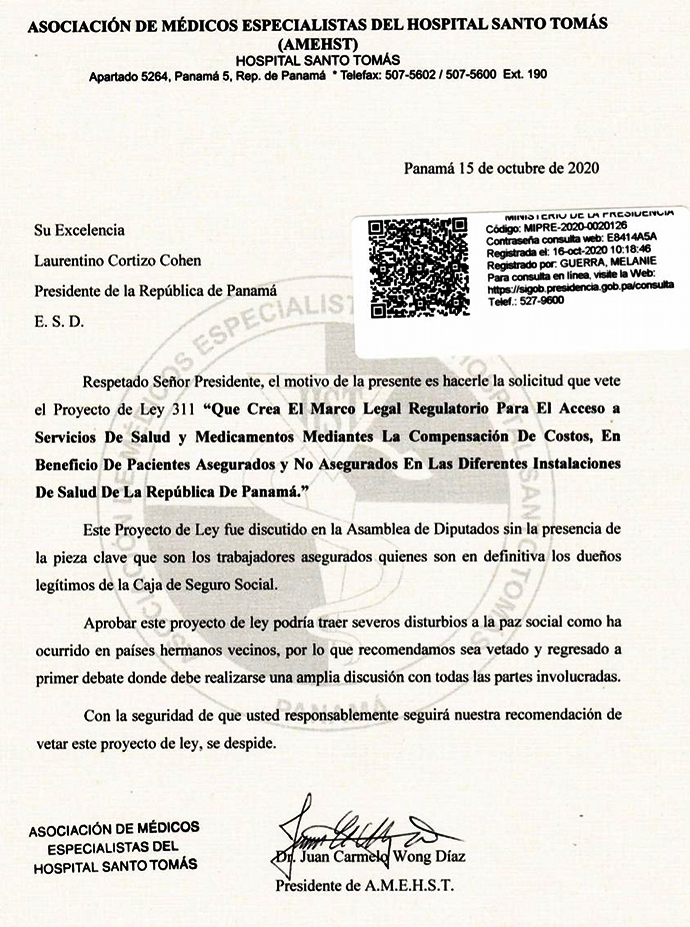Moody’s changes Panama’s outlook to negative, affirms Baa1 ratings
by Moody’s Investor Service — October 21,. 2020
Moody’s Investors Service, (“Moody’s”) has today changed the outlook on the Government of Panama’s ratings to negative from stable. Moody’s has affirmed the long-term issuer and senior unsecured debt ratings at Baa1, and Panama’s senior unsecured shelf ratings at (P)Baa1.
The key driver for the change in outlook to negative is the consideration that, absent meaningful fiscal consolidation and a sustained economic recovery, the sharp deterioration in fiscal and debt metrics will continue to undermine Panama’s credit profile in the coming years. A continued rise in the government’s debt and interest burdens would bring Panama’s fiscal metrics in line with Baa peer medians, materially eroding a credit strength that supported the upgrade of Panama’s ratings to Baa1 in 2019.
The Baa1 rating incorporates the sovereign’s still-present underlying credit strengths, including trend growth in excess of 4%, which has been above that reported by most Baa-rated peers. Additionally, Panama’s ability to access market funding at relatively low borrowing costs keeps government liquidity and refinancing risks contained.
Panama’s long-term foreign-currency bond and deposit ceilings remain unchanged at A2. The short-term foreign-currency bond and deposit ceilings are unchanged at Prime-1.
Ratings rationale
Rationale for changing the outlook to negative from stable
Panama’s rating upgrade to Baa1 in March 2019 was driven by strong government debt metrics relative to peers and trend growth above that of most Baa-rated sovereigns. Subdued economic growth in 2019 as GDP expanded by 3.0% compared to Moody’s initial 5.5% projection, fiscal slippage at the end of the previous administration, and the new government’s decision to clear arrears amounting to 2.6% of GDP led to a larger-than-expected increase in the government’s debt burden. Still, Moody’s pre-coronavirus projections assumed debt metrics would remain relatively stable in 2020 and thereafter, at levels still more favorable than those of its rating peers.
The coronavirus shock will lead to a severe economic contraction of about 10% in 2020, as the pandemic affects several economic sectors. Even though a reopening of the economy is underway, Moody’s expects a gradual recovery in the second half of the year, with GDP growth of 4.5% in 2021 followed by average annual growth of around 4% in the coming years.
The economic shock caused by the pandemic is weighing materially on government revenue. Central government current revenue fell 30% year-on-year through September and the authorities expect total revenue will be 25% lower in nominal terms for the year, about $3 billion below 2019 levels. Moody’s forecasts a widening in the fiscal deficit to around 8% of GDP in 2020 and anticipates that a recovery in revenue next year combined with efforts to limit the growth in spending will lead to a narrowing of the fiscal deficit. Nonetheless, the fiscal shortfall will remain high.
These dynamics will lead to an increase in the government’s debt and interest burdens. Moody’s forecasts the debt burden to rise above 60% of GDP by 2021 from 46% in 2019, bringing the debt/GDP ratio in line with the Baa peer median. The fall in revenue will push the interest/revenue ratio to 15% and Moody’s expects the ratio to stabilize at this level over the coming years, which is significantly above the Baa median of 8%.
In the absence of a substantive and credible fiscal consolidation program, including raising government revenue levels that are low on a comparative basis relative to regional and rating peers, Panama’s fiscal metrics will remain weaker than those of Baa1-rated peers. The government will also have to deal with rising fiscal pressures coming from the weaker financial standing of the social security system, as its numbers have deteriorated more rapidly than what authorities had initially anticipated due to the pandemic.
Rationale for affirming the ratings at Baa1
The rating affirmation takes into account Panama’s fundamental credit strengths, including a dynamic, service-based economy with investment as its main growth driver, and the government’s low liquidity risk.
Robust medium-term growth prospects remain a key factor supporting Panama’s credit profile. The authorities and the International Monetary Fund maintain an estimate of potential growth of around 5%-5.5%, but Moody’s expects trend growth of around 4% after 2021. Given its role as a global trade hub and also its strategic location, Panama will continue to attract foreign investment, especially in the logistics sector. However, because the lack of largescale projects has weighed on Panama’s growth performance since 2018, new projects would have to emerge to provide the support required to maintain sustained economic growth above 4%.
Another key support factor for Panama’s credit profile is the sovereign’s strong market access. The government has been able to fund itself in the external and local markets at low rates in spite of recently facing higher-than-normal financing needs. Panama now has the fourth lowest government bond spread in Latin America. While its bond spread rose in March and April it has since come down; borrowing costs are currently more favorable than just before the pandemic shock. Despite a higher debt burden, the weighted average cost of debt (i.e. interest/debt ratio) in 2020 is 4.2%, down from 4.5% in 2018.
Environmental, social, governance considerations
Environmental considerations currently exert limited influence on Panama’s credit profile. A hurricane has never made landfall in Panama, but the sovereign is somewhat exposed to weather events. Previously, excessive rains have prompted the authorities to request exceptions for complying with the fiscal rule. More recently, the Panama Canal has reported very low water levels, disrupting transit through the waterway and energy generation. However, Moody’s sees these events more as medium-term risks for the sovereign, which could increase if the performance of other important economic sectors is affected.
Social considerations are not material for Panama’s credit profile. Demographics are still favorable for the sovereign in terms of population growth and population dynamics. However, despite having one of the highest per capita GDPs on a purchasing power parity basis in Latin America, Panama has high income inequality, which adds downward pressure to Moody’s political risk assessment. Moody’s also regards the coronavirus pandemic as a social risk under its ESG framework, given the substantial implications for public health and safety.
In terms of governance, control of corruption is one of Panama’s most pressing challenges. Panama scores poorly in this aspect of institutional strength, as measured by the Worldwide Governance Indicators. In addition, the country has a weak track record of complying with its fiscal rules, which also limits Moody’s assessment of institutional effectiveness for the sovereign.
GDP per capita (PPP basis, US$): 26,822 (2019 Actual) (also known as Per Capita Income)
Real GDP growth (% change): 3% (2019 Actual) (also known as GDP Growth)
Inflation Rate (CPI, % change Dec/Dec): -0.1% (2019 Actual)
Gen. Gov. Financial Balance/GDP: -3.1% (2019 Actual) (also known as Fiscal Balance)
Current Account Balance/GDP: -5.2% (2019 Actual) (also known as External Balance)
External debt/GDP: 33.5% (2019 Actual; Non-financial public sector only)
Economic resiliency: baa2
Default history: No default events (on bonds or loans) have been recorded since 1983.
On 15 October 2020, a rating committee was called to discuss the rating of the Panama, Government of. The main points raised during the discussion were: The issuer’s economic fundamentals, including its economic strength, have materially decreased. The issuer’s fiscal or financial strength, including its debt profile, has materially decreased.
Factors that could lead to an upgrade or downgrade of the ratings
Given the negative outlook, a rating upgrade is unlikely. The outlook could return to stable if Moody’s were to assess that debt metrics would stabilize – or improve – after 2021 as a result of both the authorities’ fiscal consolidation efforts and continued strong economic growth. Additionally, measures to support the improvement in the fiscal accounts related to the social security system and the government’s low revenue intake would be credit positive.
On the other hand, if Moody’s were to conclude that fiscal consolidation measures adopted by the authorities would be insufficient to preserve or recover Panama’s fiscal strength, it would consider a rating downgrade. Additionally, should economic growth come below estimates incorporated in Moody’s baseline scenario, weighing on the fiscal accounts, this would pressure Panama’s credit profile and its sovereign rating. Inability to effectively address rising pressures stemming from the social security system would also be credit negative.
The principal methodology used in these ratings was Sovereign Ratings Methodology published in November 2019 and available at https://www.moodys.com/researchdocumentcontentpage.aspx?docid=PBC_1158631. Alternatively, please see the Rating Methodologies page on www.moodys.com for a copy of this methodology.
The weighting of all rating factors is described in the methodology used in this credit rating action, if applicable.
Regulatory disclosures
For further specification of Moody’s key rating assumptions and sensitivity analysis, see the sections Methodology Assumptions and Sensitivity to Assumptions in the disclosure form. Moody’s Rating Symbols and Definitions can be found at: https://www.moodys.com/researchdocumentcontentpage.aspx?docid=PBC_79004.
For ratings issued on a program, series, category/class of debt or security this announcement provides certain regulatory disclosures in relation to each rating of a subsequently issued bond or note of the same series, category/class of debt, security or pursuant to a program for which the ratings are derived exclusively from existing ratings in accordance with Moody’s rating practices. For ratings issued on a support provider, this announcement provides certain regulatory disclosures in relation to the credit rating action on the support provider and in relation to each particular credit rating action for securities that derive their credit ratings from the support provider’s credit rating. For provisional ratings, this announcement provides certain regulatory disclosures in relation to the provisional rating assigned, and in relation to a definitive rating that may be assigned subsequent to the final issuance of the debt, in each case where the transaction structure and terms have not changed prior to the assignment of the definitive rating in a manner that would have affected the rating. For further information please see the ratings tab on the issuer/entity page for the respective issuer on www.moodys.com.
For any affected securities or rated entities receiving direct credit support from the primary entity(ies) of this credit rating action, and whose ratings may change as a result of this credit rating action, the associated regulatory disclosures will be those of the guarantor entity. Exceptions to this approach exist for the following disclosures, if applicable to jurisdiction: Ancillary Services, Disclosure to rated entity, Disclosure from rated entity.
The ratings have been disclosed to the rated entity or its designated agent(s) and issued with no amendment resulting from that disclosure.
These ratings are solicited. Please refer to Moody’s Policy for Designating and Assigning Unsolicited Credit Ratings available on its website www.moodys.com.
Regulatory disclosures contained in this press release apply to the credit rating and, if applicable, the related rating outlook or rating review.
Moody’s general principles for assessing environmental, social and governance (ESG) risks in our credit analysis can be found at https://www.moodys.com/researchdocumentcontentpage.aspx?docid=PBC_1133569.
The Global Scale Credit Rating on this Credit Rating Announcement was issued by one of Moody’s affiliates outside the EU and is endorsed by Moody’s Deutschland GmbH, An der Welle 5, Frankfurt am Main 60322, Germany, in accordance with Art.4 paragraph 3 of the Regulation (EC) No 1060/2009 on Credit Rating Agencies. Further information on the EU endorsement status and on the Moody’s office that issued the credit rating is available on www.moodys.com.
Contact us by email at fund4thepanamanews@gmail.com
To fend off hackers, organized trolls and other online vandalism, our website comments feature is switched off. Instead, come to our Facebook page to join in the discussion.
These links are interactive — click on the boxes










